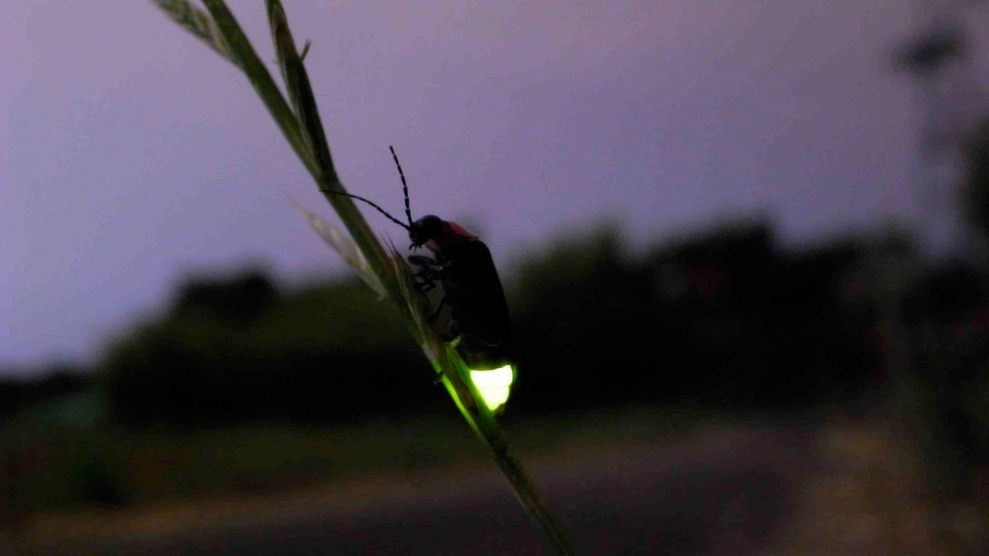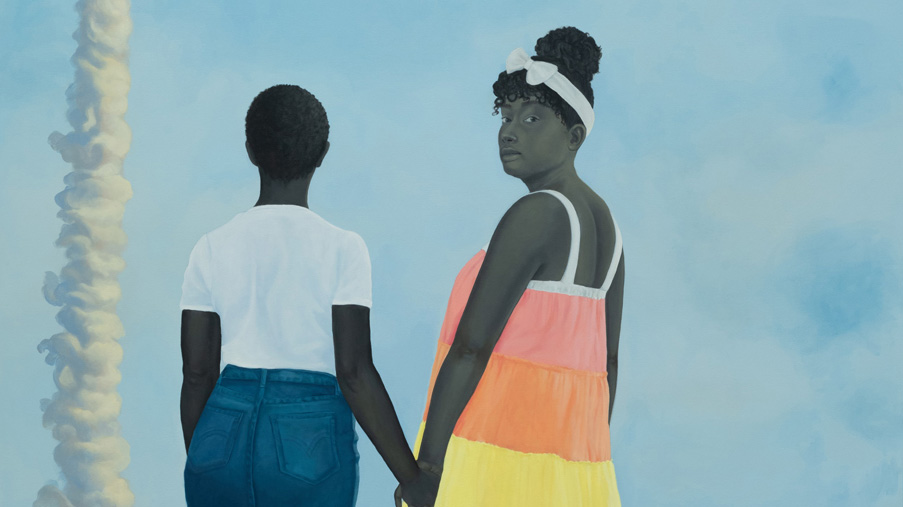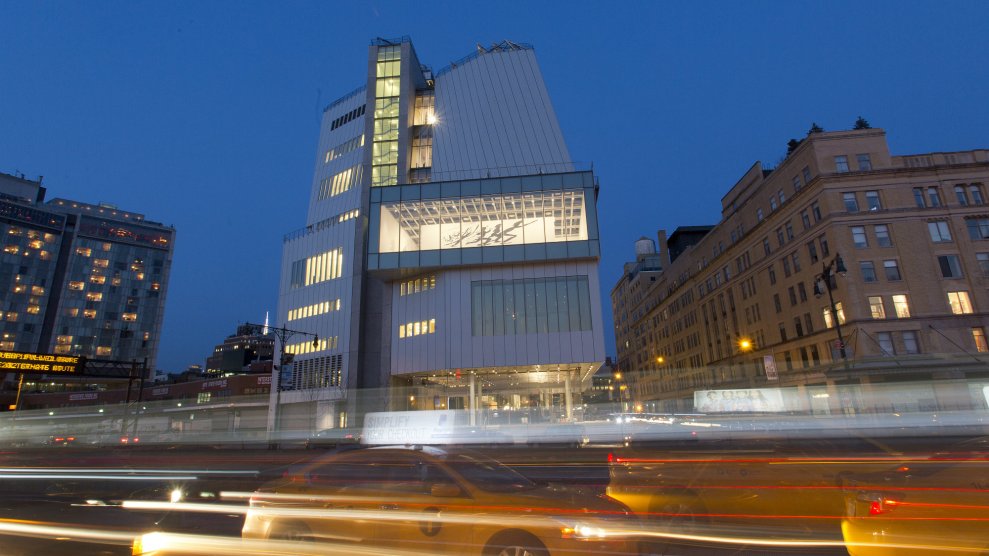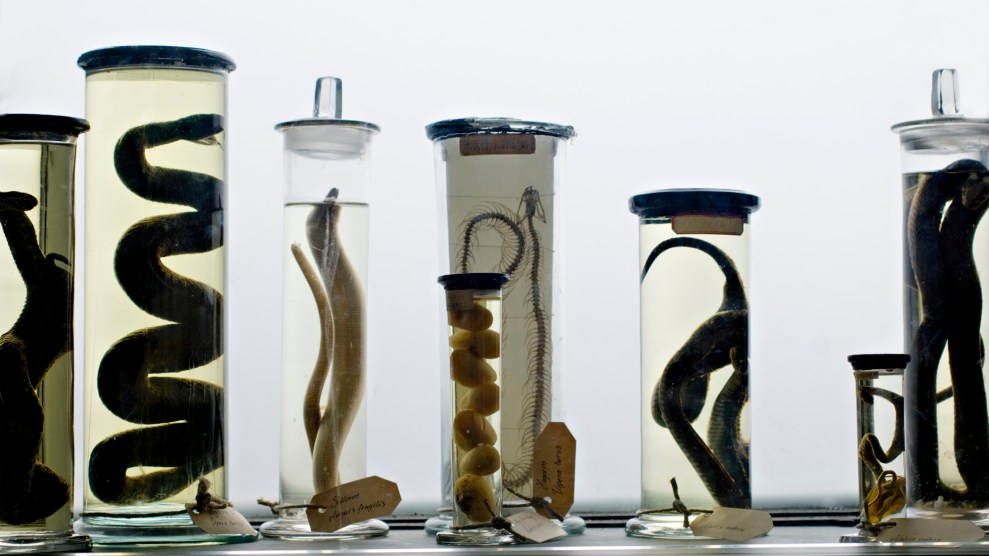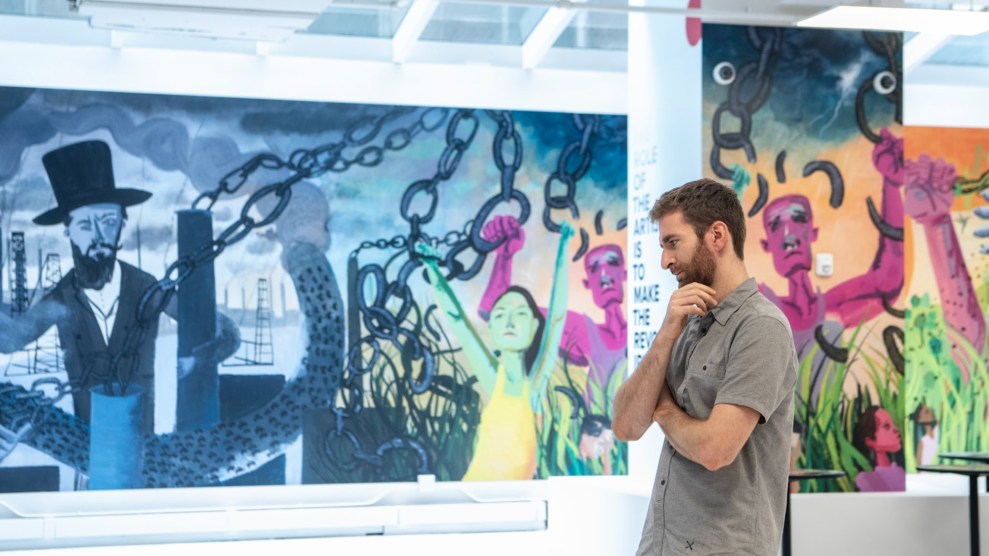
Sari Goodfriend/The Climate Museum
“Are museums shrines to the past, hubs of engagement for the present, or shapers of the future?” asks Beka Economopoulos in her review of the 2019 collection Museum Activism. Economopoulos co-founded and directs the Natural History Museum, a traveling pop-up museum that reimagines “natural history,” but it’s a question any visitor can ponder in any exhibition: relics, fossils, science experiments, crafts, or art ranging from Monet to a blank canvas or pile of trash.
“No one would dispute that museums exist to tell stories—about people, communities, and nations,” the collection’s editors ask, “but who is telling the story of the early 21st century?”
Miranda Massie’s climate museum fields an answer to both questions. Massie, who thinks museums could transform public engagement with climate activism, spent the better part of 20 years litigating on behalf of nonprofit civil rights advocates New York Lawyers for the Public Interest, where she saw the disproportionate harms communities of color faced in the climate crisis—and how groups less harmed weren’t responding.
In 2014, she started developing the Climate Museum, a general activation and education project for people who are worried about climate change but not aware of how they can help effectively. Communication around the climate crisis, she believed, was “too rationalist—almost all of us are emotional creatures before we are intellectual ones.”
Five years after launching, the United States’ first climate change museum is on its eighth exhibition, which focuses solely on fossil fuels; previous exhibits have tackled issues from renewable energy to climate disinformation; it will remain free and open to the public in downtown Manhattan until January. Its exhibitions have decorated New York galleries and public spaces and include collaborations with artists Justin Brice Guariglia and Rubén Salgado Escudero and organizations like Nest Climate Campus and the United Nations Environment Programme.
The Climate Museum’s newest exhibit features a 45-foot mural depicting the history of fossil fuels, from the industry’s racialized, colonial foundations to a vision of a fossil-fuel-free future. It’s the work of decorated children’s illustrator R. Gregory Christie, who has a history of engaging with painful topics like slavery in his artistic practice. Vitally, Christie says, art can also help speak for and represent those who are no longer alive.
I spoke with both Massie, now the project’s director, and Christie to learn more about the institution they’re part of.
How does the museum engage with the disproportionate harms of climate change in communities of color and outside the West?
Miranda Massie: This show highlights disproportionate impacts of the climate crisis. What’s not understood is that the disproportionate impacts are not a coincidence. It’s not a bug. It’s the system. The fossil fuel industry, in a deep, functional way, requires the existence of sacrifice zones. Those zones are largely defined by racism within the US, and by neocolonialism internationally. One of the one of the reasons we’re doing this show now is that we don’t think it’s enough to talk about the climate crisis, we have to talk about the people who are causing it.
R. Gregory Christie: It affects all of us. The speakers [in my mural] are ethnically ambiguous because my feeling is that this affects everyone you are no matter which area of the world you live in. This affects you even if you are lucky enough to be born in a place [less affected by climate change]. This still needs to be in your mind. The world is not fair. But sometimes the pressure that people put on can help people do fair things.
Historically, the climate movement has focused a lot on science, technology, and policy. What’s the benefit of focusing on arts and culture?
MM: We need all of it. The specific benefit of focusing on arts and culture is that almost all of us are emotional creatures before we are intellectual ones. One of the problems with early climate communication was [the attitude that] if I tell the whole truth earnestly, accurately and in great detail, the right policies will follow. That misses the fundamental nature of the situation that we confront. The fossil fuel industry is entrenched in our economy and politics. It requires a very high level of general engagement across the population to be ended. To get that high level of engagement, you need people emotionally involved.
RGC: Something to think about when I illustrate children’s books is that I’m often creating artwork for people who are not even here yet. They’re not even born yet. The work is documented, and it goes into libraries. The thing about libraries and museums—these are things that are passed down in society on even when we’re not here. Work that was created decades or years ago still has a message. The great thing is although people are not here anymore, that still represents them. And that’s what makes art so valuable. It leaves messages. It’s such a beautiful way to help people take on other things.
What is unique about the newest exhibit, or your art in it?
MM: It’s called The End of Fossil Fuel. It includes several interactive elements that demonstrate the ways in which the use of fossil fuels is completely bound up with systems of racism and other inequalities, and industry’s campaign of lies, fraud, and disinformation. That is the hard-truth side of the show. The exhibition also mobilizes remarkable stories of victories; it highlights environmental and climate justice organizations that have fought back against the racist abuses of the fossil fuel industry. R. Gregory Christie’s mural depicts the transition from a fossil fuel economy rooted in the racist past of colonialism, enslavement, and the Industrial Revolution through the period of struggle that we’re now in to a vision of what that bright future could be.
RGC: It’s important for me to really address the need for something to be done. And that’s a bit scary, [but] it has a playfulness to it as well. There is a balance of serious topics and there’s also a whimsy to it. When you find out that there’s someone else who’s feeling the same things [as you], and there are people who want to take action with you—that’s what I’m trying to capture. I want a brighter viewpoint, rather than gloom and thinking that things are set on one way down one road. It’s always been a tree with different branches, almost like different pathways.
Past museums have been a tool for historicizing events and eras; the climate crisis is present and future-facing. What do you think the purpose of the “museum” is?
MM: I love that question. We are engaged in New Museology. It’s an iteration in the theorizing done by museum professionals about the museum as a place for civic engagement. Our goal is to use the museum, which is a space that is deeply popular and deeply trusted—a fairly unusual combination in our culture at any point, and particularly now—to help people understand their own agency, and their own ability to make a difference.
RGC: I used to work at the Guggenheim for years. When I first went in there, I only thought of paintings as art, until I saw [contemporary] artists like Rebecca Horne and Felix Gonzalez‘ candy in the corner displays. It opened my mind as to how people view art and how I view art. It can help you communicate with people who don’t speak the same language.
Art used to be viewed as something sacred; it was also something that was used in everyday life. It wasn’t just considered something that was for the elite and only for auction houses. That is something I want to bring back to people.
How have you been tracking engagement and the efficacy of your programming? How is it helping people connect with the ideas that you’re presenting?
MM: There’s a pro bono team from the Center for Climate Change Communication at George Mason University that has designed a survey we’re going to use as people are coming into the show, and then again a couple of days later. We’re very excited; it’s [been] difficult to quantify the impact of our work. Based on my own firsthand experience, I have absolutely no doubt that this work has changed how people think about themselves in relation to the climate crisis. It is palpable when you’re in this space. People walk out knowing something different and new about themselves.
These interviews have been lightly edited and condensed for clarity.

